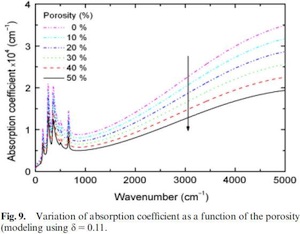Ask for a reprint
email :
* Give your email
2011
ACL
|
M.T.Ta, B.Rousseau, L.del Campo, J.Y.Rolland, S.Touchefeu, E.Véron, D.De Sousa Meneses, P.Echegut, P.Lenormand, F.Ansart, 'High-Temperature Radiative Behavior of an La2NiO4+delta Cathodic Layer for SOFCs (up to 900°C): Influence of delta and Texture', J. Am. Ceram. Soc. 94 2535–2541 (2011) doi:10.1111/j.1551-2916.2011.04446.x
Thermal radiation is likely to play an important role in the calculation of the energy balance in solid oxide fuel cells (SOFCs), due to their high operating temperatures (600°–1000°C). However, the majority of previous studies dealing with this issue have used room-temperature radiative data for determining the overall heat transfer process within a given cell, which could lead to an inexact appreciation of the role played by the thermal radiation. Consequently, the thermal field within the cell could also be incorrectly determined; however, accurate knowledge of the thermal field is important in order to understand the mechanical behavior of SOFCs. Several parameters, including chemical composition, texture, thickness, and of course operating temperature, have a large effect on the radiative properties of a given compound. As a first step to elucidate the temperature dependent behavior of SOFCs, we deposited an La2NiO4+d cathodic layer on a planar ZrO2–8%Y2O3 electrolyte-supported SOFC and investigated its radiative properties using high temperature infrared emissivity spectroscopy (100°–900°C). Additional X-ray diffraction, thermo-gravimetric analysis, and environmental scanning electron microscopy measurements were also made to study the role played by both the chemical composition and texture on the radiative properties of the cell.
|

|